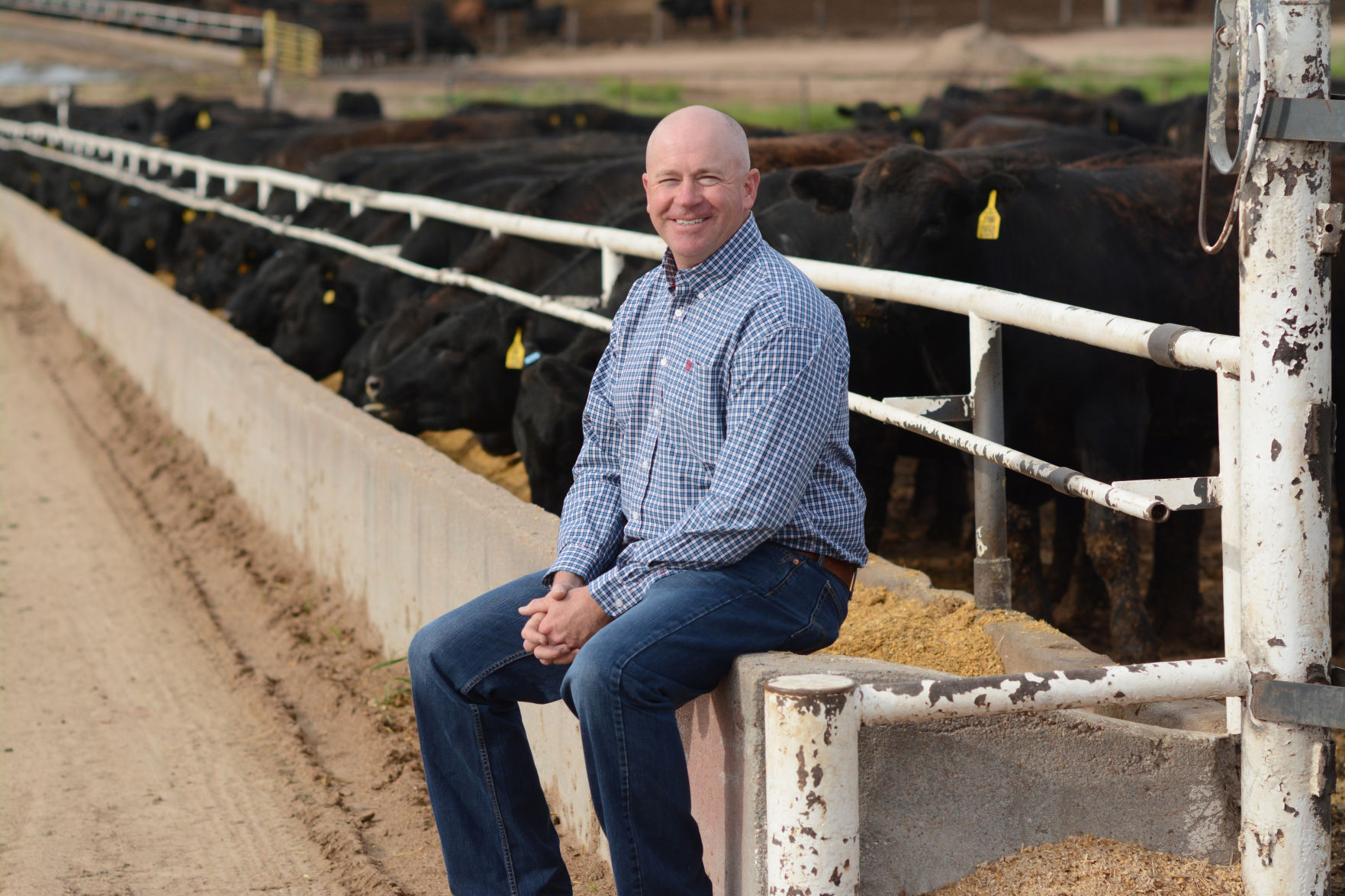Cattle feeder Grant Bledsoe, Wray, Colorado, knows there’s a time for change, but his greatest strength may be knowing there’s a time to stay the same.
“We buy predominately Angus-based cattle from the northwestern United States and some ranches we have purchased from going on close to 35 years,” he says.
For their continued focus on procuring and feeding high quality, Bledsoe Cattle Company earned the Certified Angus Beef 2018 Feedyard Commitment to Excellence award. Grant and his wife Katie accepted the honor at the brand’s recent annual conference in Maui, Hawaii.
“Grandad” Henry started relationships that have carried into the third generation of both feeders and ranchers.
“We purchase from people that raise good cattle, but they’re also extremely good at handling their cattle,” says Bob Bledsoe, who transitioned out of the feedyard manager position shortly after his son Grant returned home. “The calmer cattle really perform better.”
Sometimes, the best plan is exactly what dad and grandpa always did.
Henry and Lucile Bledsoe started the farming, ranching and cattle feeding operation that now has a 7,000-head finishing capacity. Row crops and grasslands complement the yard.
Back then, Henry would keep books by hand, packing up the roll-top desk each night to bring home to Lucile. The spare bedroom doubled as a home office, and she’d get out her adding machine to make sure they balanced.
“There was the two of us. We worked side by side, always full partners,” says 96-year-old Lucile.
Then came Bob and Becky. They had a computer the size of a file cabinet. Grant checks his markets by smartphone.
“We’re always for progress. Not progress for itself. Not progress because the neighbors have it,” says Lucile. “Progress that it will fit your business and be profitable in your business.”
When Grant returned from Colorado State University in 1998, all three generations worked together.
“I look back on it now and I think of how special that was to learn from [Grandpa Henry] and how he deals with people,” Grant says. “That’s been really important to me and developed me into the type of cattle feeder and businessman I am today.”
Bob and Grant still get to the feedyard at 5:30 a.m. most every day, gathering at the scale house with many of their 18 employees for a quick predawn meeting.
Once a week, the family gives most of the feedlot crew the day off as they walk pens. It’s a tradition that’s been passed down so now Bob and Becky might join Grant and Katie and their three kids, Jackson, Emma and Eryn on any given Sunday.
“It’s good planning time, but it’s a way we know exactly and intimately how the cattle are doing,” Bob says.
Fall is the busiest, as they wean 8,000 head during a narrow window.
“They’ve been put on a truck, trucked to our place, brought into a foreign situation, fed something totally new that they’ve never eaten before,” Grant says. “We do what we can to try to make that process as gradual as we possibly can and get them acclimated.”
Justin and Lynn Mayfield’s cattle have been taking the 8-hour journey from their Casper, Wyoming, ranch to Bledsoe Cattle Company since Lynn’s parents first sold to the family in 1988.
“We each kind of understand each other’s programs and we’ve got the same goal. We work together to keep the families and the next generation involved to turn out the best protein we can,” Justin Mayfield says.
A few years ago the feeders incentivized them to precondition their cattle.
“There’s years when they’ll win and there’s years when we win but all in all, through it all, we’ve all won and we’ve all grown. It’s been good,” Mayfield says.
All cattle are identified back to the ranch of origin.
“We have good communications with a lot of the suppliers we buy from,” Grant says, noting they can share observations and data back.
Cargill Meat Solutions became their go-to packer 30 years ago.
“They know our product and if they see something they would like to improve, we are open to it, because the customer is right, all the time,” Bob says. “Usually what’s good for them is good for us.”
Quality grade is important.
“We grid probably 95 percent of our animals and when the Choice-Select spread is fairly wide, we get a good premium for cattle that grade,” Grant says.
In a decade’s time, he’s watched the quality grade get better and better. They used to average between 15 percent and 25 percent CAB brand acceptance, but now sell loads that top 50 percent.
Over the past three years, nearly 18,000 head per year have averaged 89 percent Choice and 25 percent CAB acceptance. In the first half of 2018, the average hit 40 percent brand acceptance.
“I just love what I do and I love raising my family in a similar situation. I can’t think of anything I’d rather be doing than what I get to do on a regular basis,” Grant says.


